PowerPoint Presentation Live is LIVE!
A feature I’ve been excited for since the Microsoft team first teased it to the MVPs last year is finally here. Microsoft has been taunting us with the new Live Presentations feature, and it’s ready for you to try out – just in time for all the virtual meetings and conferences going on!

So what is it? PowerPoint Live Presentations is a new way to share a PowerPoint presentation. The presenter can now put the presentation right on their audiences’ devices. And it adds some new presentation capabilities for the audience. Anyone invited can watch the presentation you are presenting live on their mobile device or computer screen, they can go back to see any previously-presented slides (but not get ahead of you), give live feedback, and most amazing, see live transcription of your presentation – in virtual any language! And each person viewing can choose the language of their choice for the transcription!!
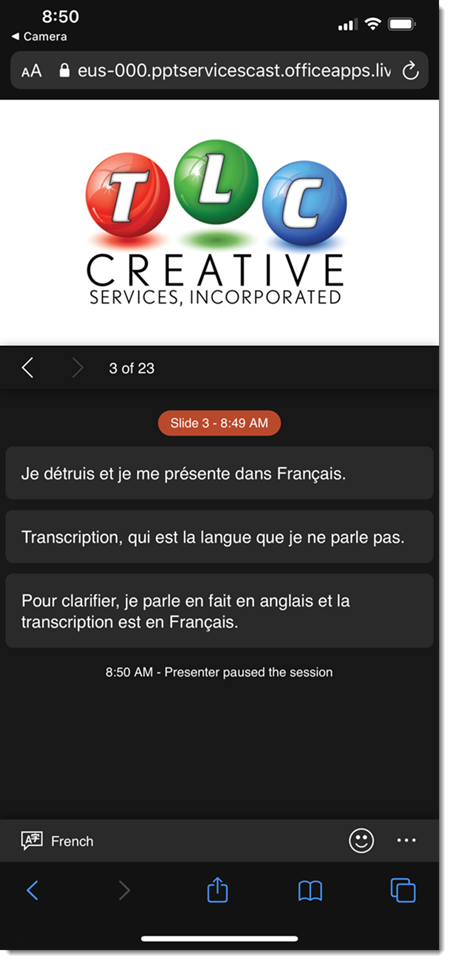
On the next post I am going to walk through the process of starting a presentation as a Live Presentation. But the basics are:
- Presenters must have a Microsoft 365 subscription
- The presentation must present from PowerPoint online (note: truly run PowerPoint only, not a OneDrive presentation opened in the desktop app or Teams)
- Any viewing does not need a Microsoft 365 subscription (yay!)
- The viewer just needs the QR code or URL (see the next post for how to and a demo)
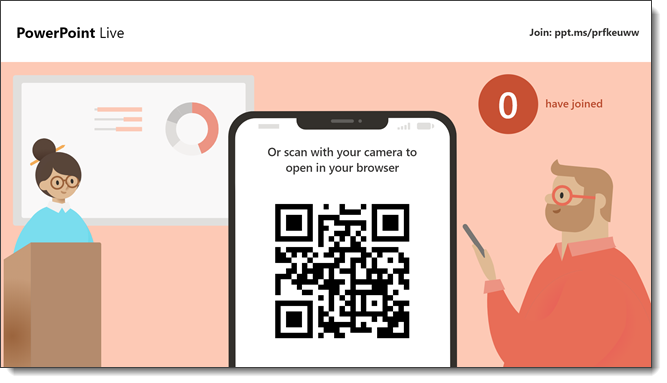
The viewing/audience experience:
- During the presentation, the slides display and update in real time
- It is slides and voice, no webcam
- Everyone watching can independently view previous slides (but can’t go past the slide you’re currently on)
- Everyone watching can choose 1 of 60+ languages to have your talk automatically, and in very close to real time, transcription
- The audience can “react” to each slide with a set of emojis such as “thumbs up,” “laughing,” or “puzzled” that appear briefly on the presenter’s screen (I am not certain I see this feature liked in professional corporate presentations, but it is going to be a hit with those younger than me!)

After the presentation ends:
- The audience screen pops up a short survey with categories such as Slide Design and Speaker Skills
- The presenter receives an email with a summary of the feedback; how many reactions, which slide received the most reactions, and the audience evaluation (anonymous and compiled)
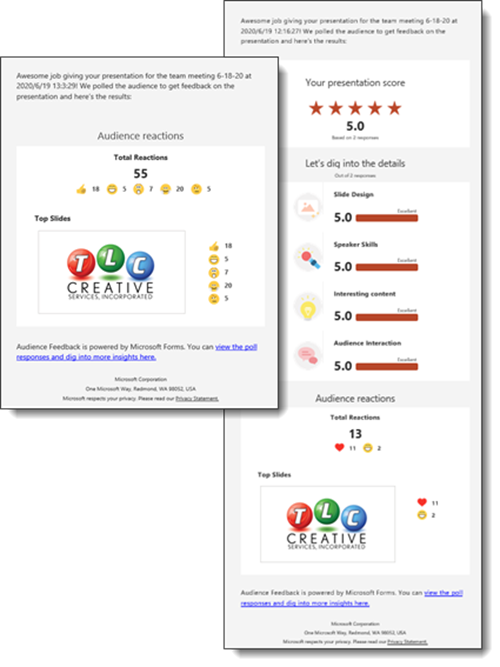
The live transcription, available in 60+ languages, is a technology marvel. I have the opportunity to be a part of several corporate meetings each year that have live audio translation. While the Presentation Live transcription is not going to replace that, it is amazing and will make presentations far more accessible to multiple language audiences. The Presentation Live transcription is text only, not audio. It is fast, I would say pretty good, and in our internal tests, the bilingual members of our TLC creative team said that the other languages are pretty spot on.
[videopack id=”14381″ width=”464″]https://thepowerpointblog.com/wp-content/uploads/2020/06/PresentationLive-3.mp4[/videopack]
We’re pretty exited about the capabilities and possibilities of PowerPoint Live Presentations. Stay tuned as we spend the next few posts going more in depth on the Presentation Live features!
Troy @ TLC
Isometric Design and 3D Models
The term “isometric” seems like it can be used interchangeably with “3D,” but they are slightly different forms of adding dimension to an object.
Here is a demo we created (using PowerPoint of course), that goes through some of similarities and differences between a 3D model and an isometric illustration.
[videopack id=”14365″]https://thepowerpointblog.com/wp-content/uploads/2020/06/3D-Cube-and-Isometric-Design_v2.mp4[/videopack]
Isometric design appears dimensional, but it’s “fake” 3D, as it’s not based on a true 3D model like the cube in the video (callout to Jake who created the 3D model for this post). The lines of shapes are angled at 33°, but you cannot show any other view of the isometric illustration without drawing a version. The 3D model, on the other hand, is easy to manipulate and move around in PowerPoint.
Along with not being able to show different sides of the isometric illustration, you can’t show the bottom either. This is consistent among pretty much all isometric designs. However, this, along with the consistent 33° angle, allows all isometric drawings to align and connect seamlessly if you’re building a larger illustration.
Podcast Episode 104: Remote Presenting Update
A new episode of The Presentation Podcast is available today! Join Troy, Sandy and Nolan as they have a lively conversation about the many remote presenting projects and presentations they have been involved with over the past few weeks.
Listen on Apple Podcasts, Stitcher, Google Play, Spotify and Soundcloud – or search The Presentation Podcast for “How are the Remote Presentation Meetings Going?” or go direct to the episode page here: https://thepresentationpodcast.com/podcast/104
Our Isometric Bar Chart Process
For our Creative Challenge #5, the design team utilized Isometric Illustration for the collaborative bar chart. If you’re unfamiliar, isometric illustration is a type of 3D drawing perspective that is based on using 30-degree angles. By using the same scale for every axis, the image remains proportional and non-distorted. Isometric design also creates a uniform footprint for elements so they are interchangeable with other elements and provide a consistent layout perspective across elements, and slides. For this project, the isometric layout guaranteed that each designers art for their assigned country would appear consistent and uniform with all of the other elements. The bar chart bars also were based on the same isometric 30-degree angle perspective.
In the previous blog posts on our COVID Design Challenge #5, you saw that one of the main goals was to collaborate through Microsoft Teams. This included dividing up the bar chart by country: each designer was assigned one country to create isometric artwork for. Here is an example of design process of one building, and country “tile”. Kelli on our design team was assigned Iceland – pretty fun, until she realized there aren’t a lot of isometric designs out there for Icelandic landmarks! So, she made her own! Here is a walk through of her design process:
Kelli identified this building, the Hallgrímskirkja Church in Iceland, as a notable and recognizable landmark:

(Image courtesy of Nordic Visitor Iceland)
Beautiful – and very complex! Kelli broke down her design process for turning this Icelandic landmark into an Isometric illustration.
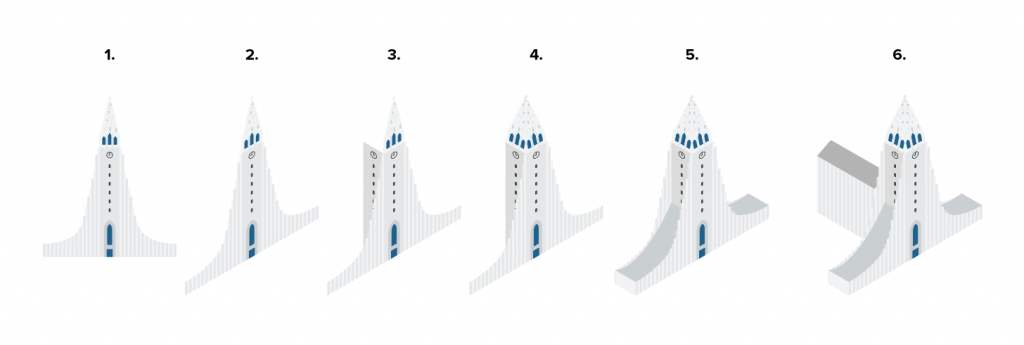
- Original vector artwork she created
- Sheared the artwork at a -30° angle
- Reversed the center part to create the main tower
- Sheared and adjusted the top of the tower to make it dimensional
- Built out the curved “wings” of the building
- Added the back part of the building
The Hallgrímskirkja Church was integrated into her version of the Iceland landscape and set atop one of the bars in the chart assigned to her.

Here is the Design Challenge #5 Isometric Chart
Our very creative design team took this week’s highly collaborative challenge and turned it into something incredible! Not only did they communicate and collaborate efficiently and effectively, but they took the idea of a bar chart to a new dimension (or perspective)!
The TLC Creative design team kicked off the project with a group call using a Teams’ video meeting. The discussion was focused on ideas of what they wanted the result to visually be, how to divide the tasks, and assign roles and responsibilities. They used the Posts tab in the designated channel to post a recap of what was covered on the call for those that couldn’t make it:
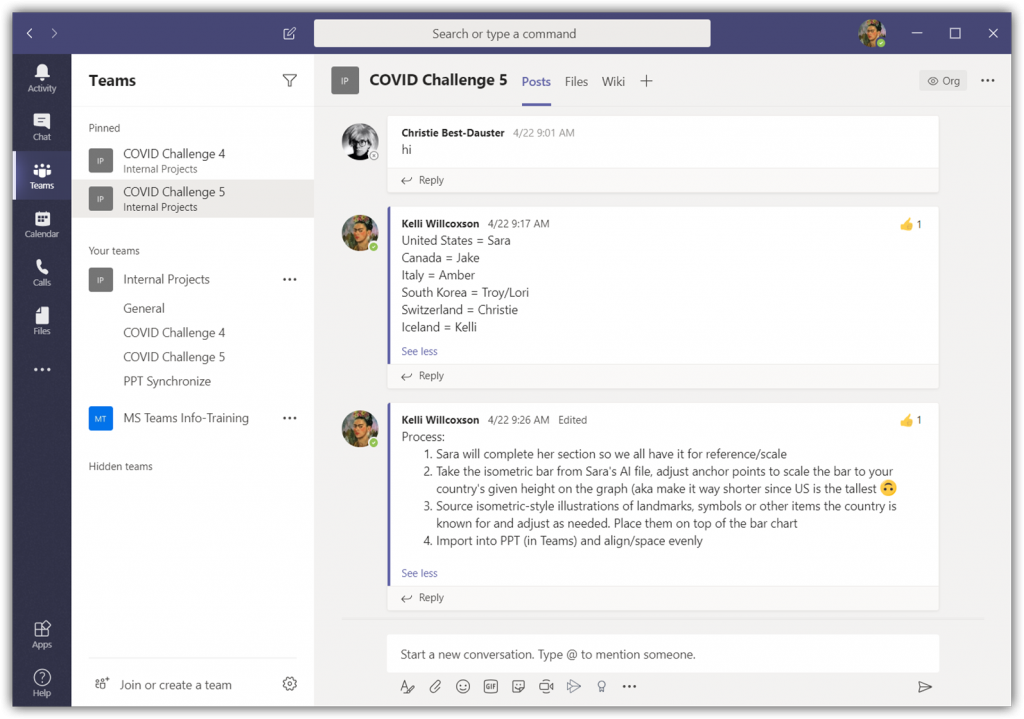
The design team decided to maintain the bar chart concept, but with a more decorative and visual styling. Color scheme identified, perspective agreed upon, and graphic style to represent each country established. Each team member created their assigned country’s artwork and data viz graph. Each was merged into the core PowerPoint file hosted in the Microsoft Team.
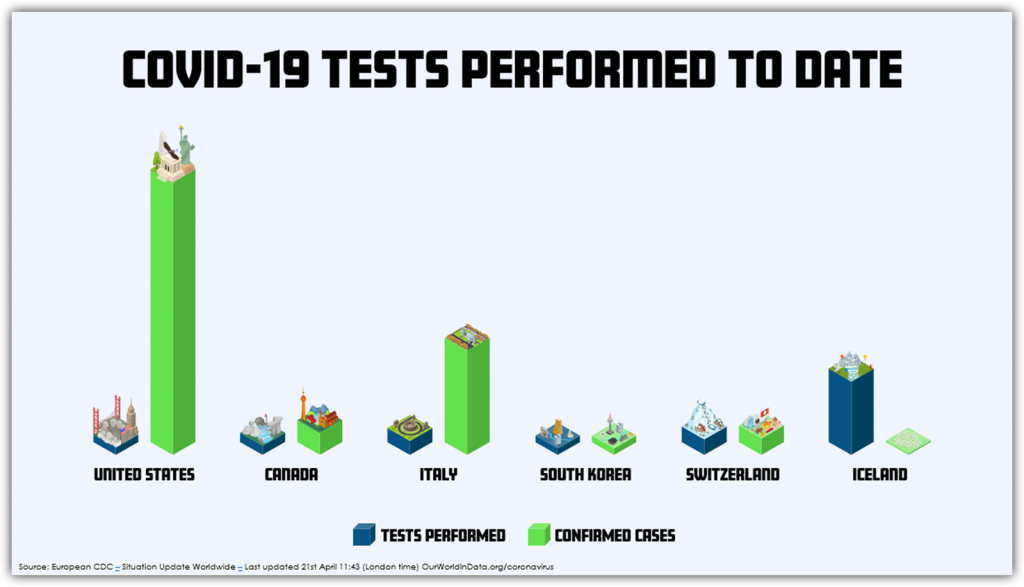
The next phase was another group collaboration meeting to discuss options for moving from good to a great visual. Here is the final team collaboration chart and slide layout:
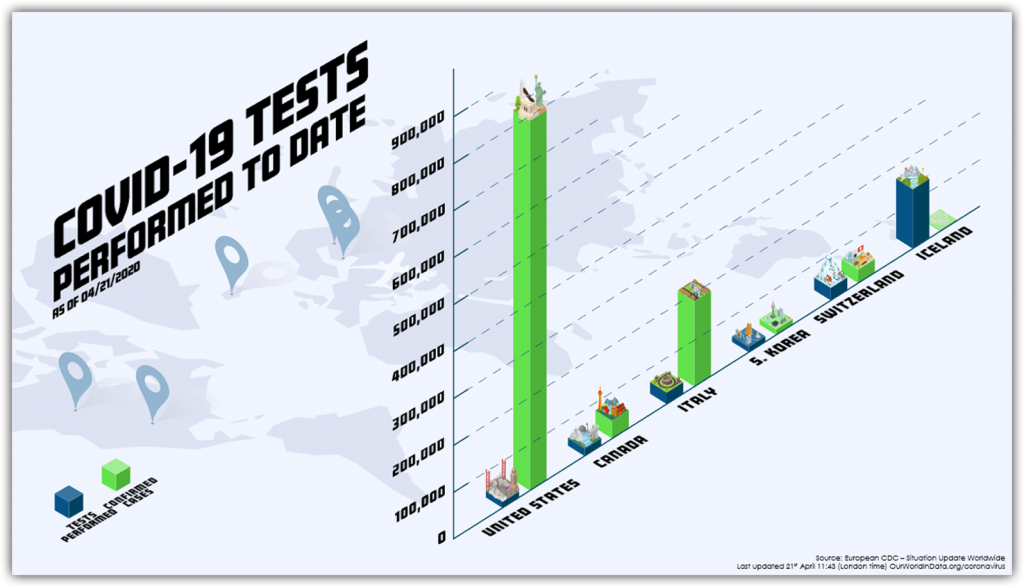
All text is editable in PowerPoint. All elements are imported .svg graphics that can be adjusted in PowerPoint. The entire process of working from a central Teams file with everyone’s edits automatically incorporated for the other designers to instantly see and work in tandem with each other was a success! Our design team did a great job on this challenge and, as a bonus, our design studio is using Microsoft Teams more than ever now for communication and collaboration!
Troy @ TLC
What is the TLC Creative Design Challenge #5?
With a whole month of COVID Challenges under the team’s belt, it seemed time to work on something more timely! Building off the previous design challenge (where our design team worked from files hosted in a Microsoft Teams team), we decided to explore the collaborative features of Microsoft Teams even more. The TLC Design Team was sent this prompt (via a designated channel in Teams!) to start the week:
Welcome to Challenge 5! In the Files tab, you’ll see a single slide with a chart comparing the number of COVID-19 tests performed to date with the number of confirmed cases being reported. Each of you will pick one country and design those two bars of the chart. The goal is to focus on two things: design (do something amazingly creative with your piece of the chart) and communication (work together as a team to determine how you’re going to go about sharing the work).
Key takeaways: the final design will be just 1 slide that all 6 designers worked on, and it will all be done with Microsoft Teams’ collaborative environment.
This is what our designer team was given to work with (in Microsoft Teams, of course):
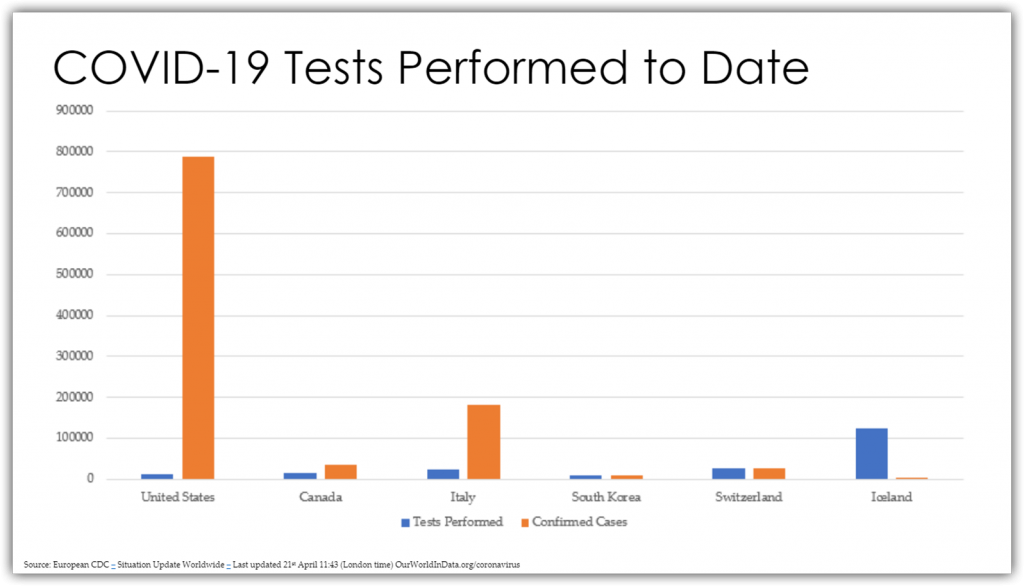
Check back in a couple days for the incredible results!
Tabs in PowerPoint
It’s official: PowerPoint has made its first major addition the Ribbon interface since its inception with PPT 2007. The addition provides no additional functionality, but it does greatly speed up production and design! It is the seemly simple, but wonderful, tabs for the right action pane, called “Tabbed Panes.”
As a task pane is opened, a tab for it is included along the right column. To change which tab is available, click the icons. Tabs are not closed unless you click the X icon. Tabs include: Format, Animation, Selection Pane, Comments, and Version History.
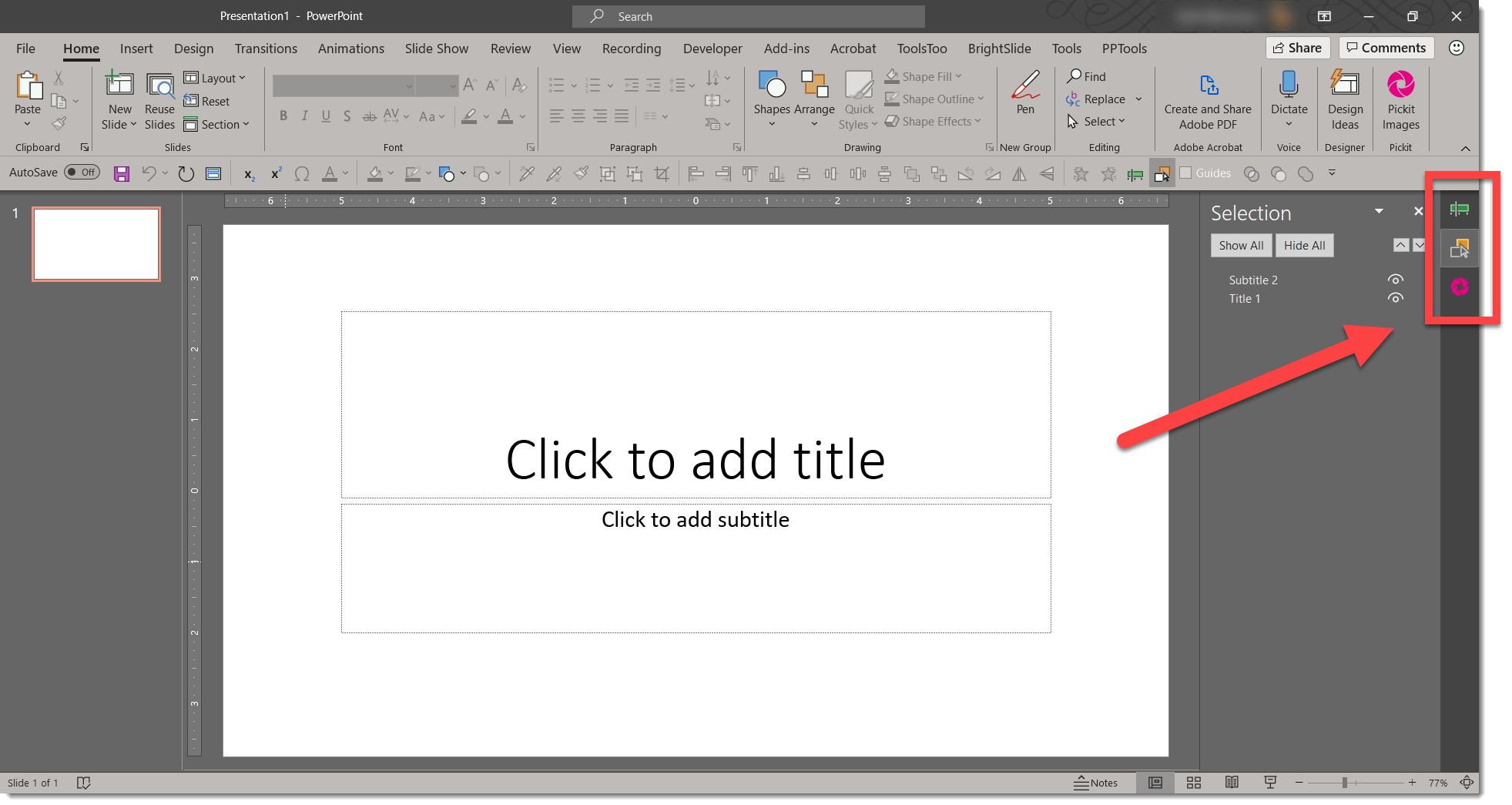
There are a few things to note with this added feature: first, you must have 2 or more task panes open to see the tabs; just one will appear just as it always has. Also, there is a nice interface to allow side-by-side view of multiple tabs you select (as example, I often have the animation and selection pane tabs open side-by-side when working on a complex animation). View the tab you want on the “left” and select “move out of tab”.
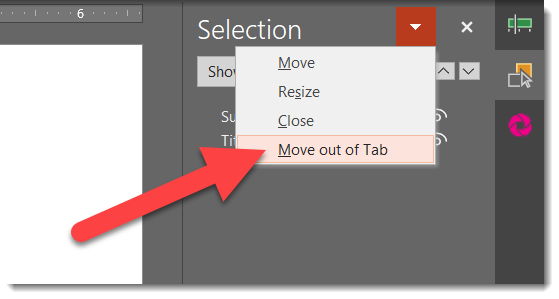
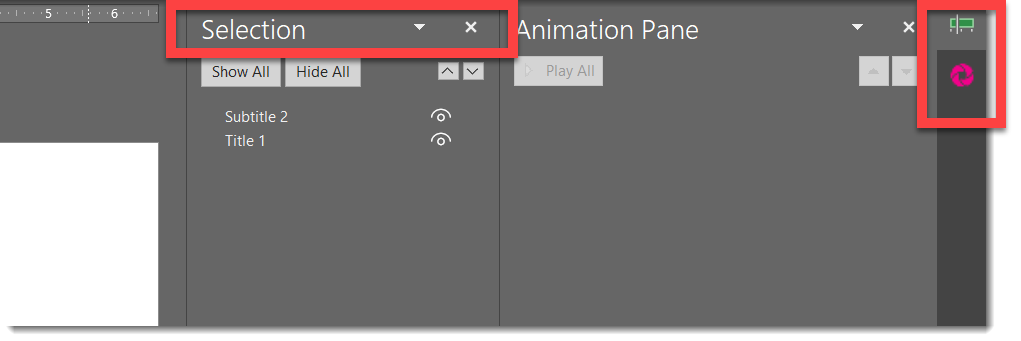
It is still possible to make any pane undock and become free floating (as example, to place on a second monitor).

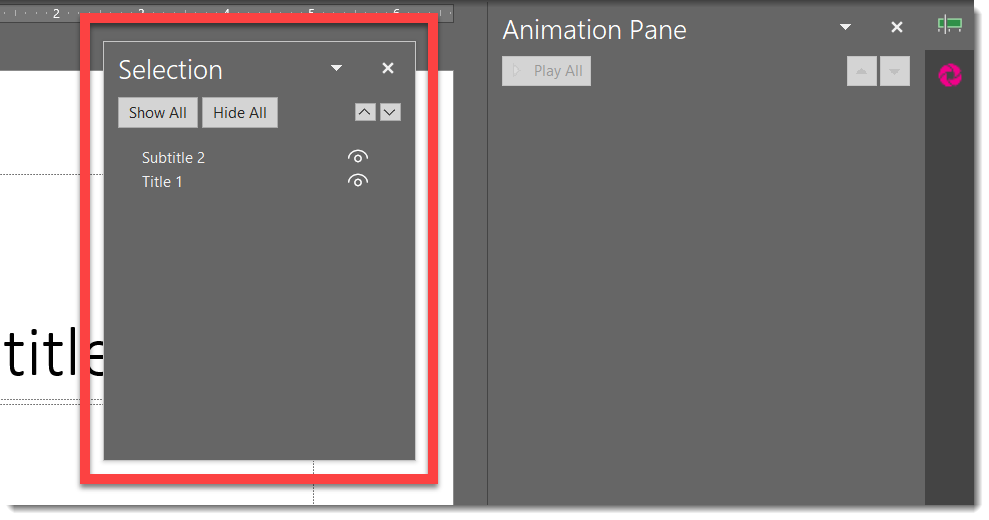
However you choose to arrange your panels, here’s a tip: to navigate to a pane with keyboard, double-tap press F6 – first to focus on the active pane, and second to focus on the tab icons. Use the up/down arrow keys to select different tabs, and then press enter to bring them to front.
This is a great update that increases the usability of PowerPoint even more. However, I have a few questions in to Microsoft: What is the official name of these “tabs”? When were they added? How do we see multiple task panes side-by-side now (It is common to have the animation and selection panes open at the same time)? Can the tabs be preset to be present when PPT is launched?
Reference information: https://blog-insider.office.com/2020/02/20/improved-pane-management/
Troy @ TLC

